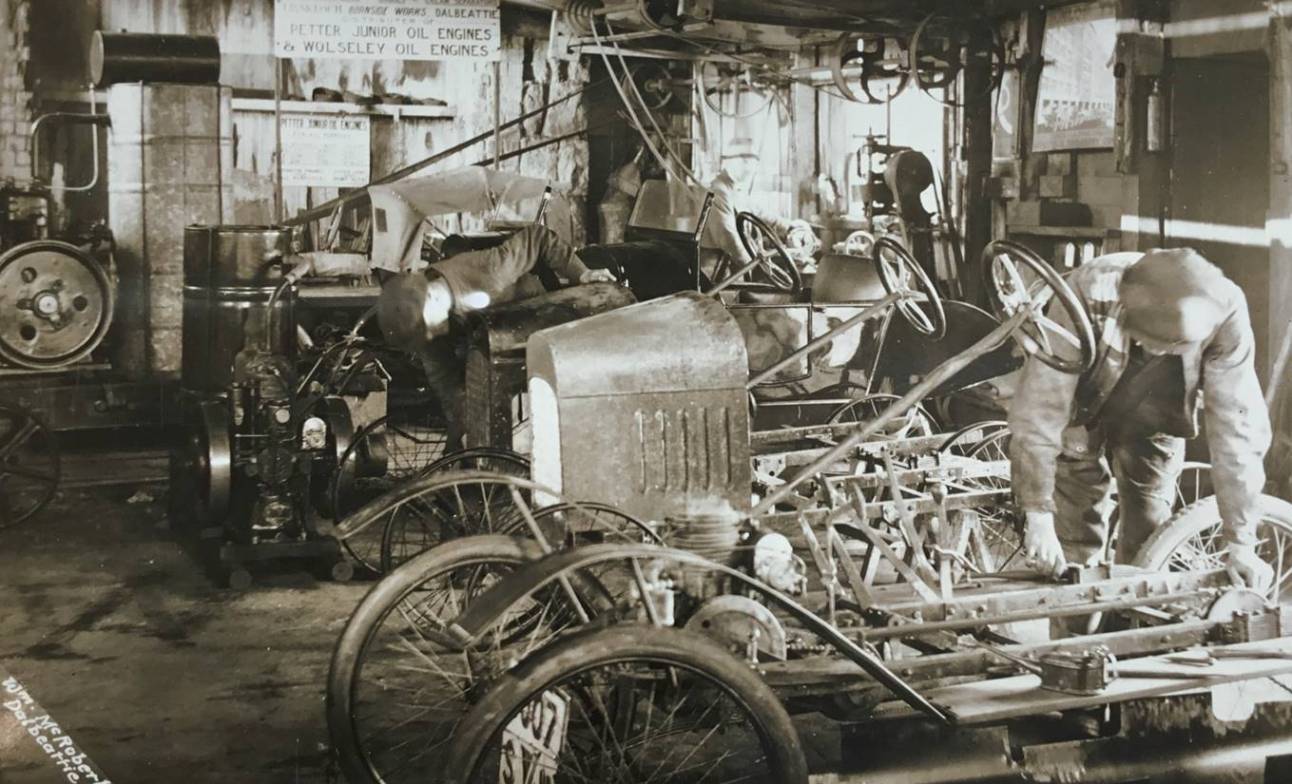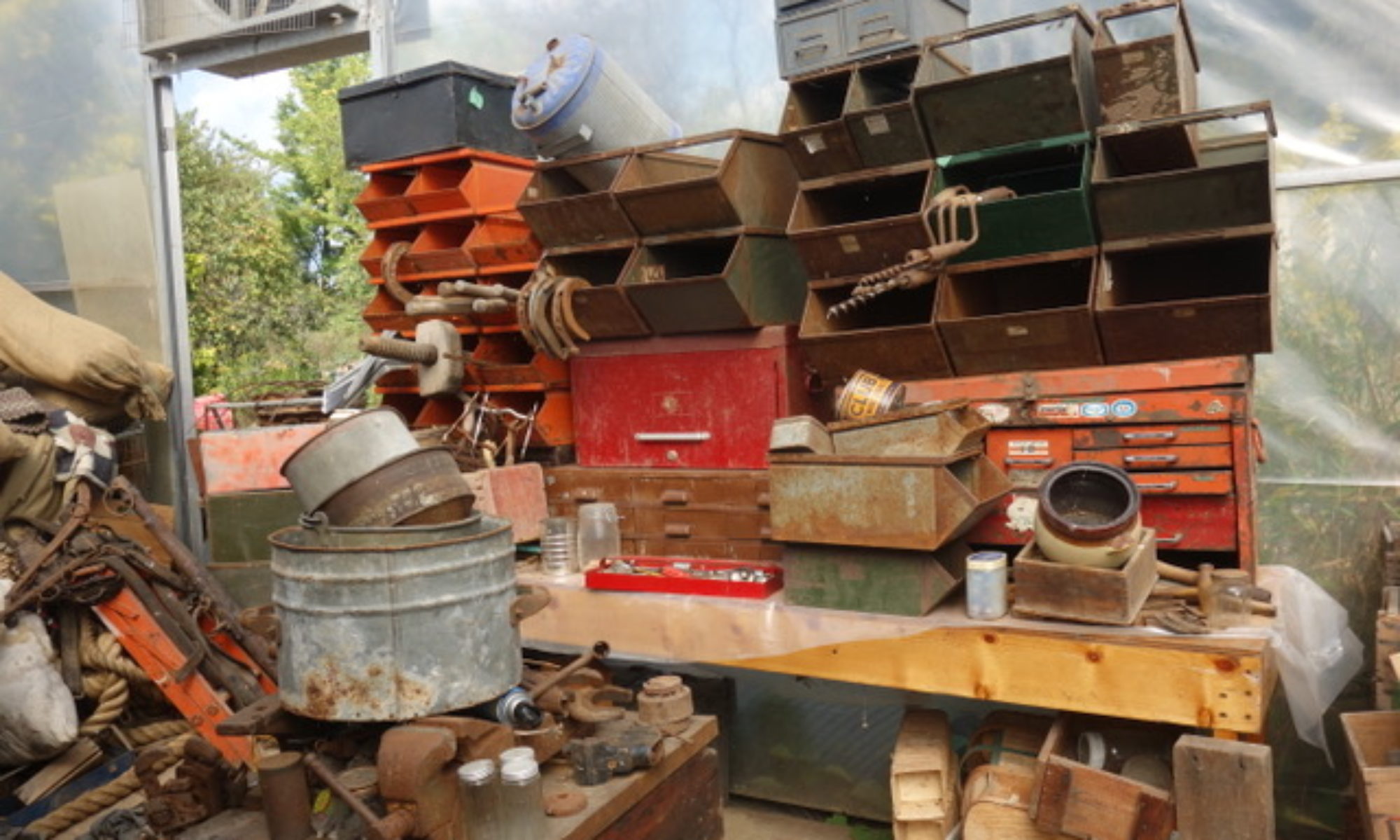Begin forwarded message:
From: SKEOCH <alan.skeoch@rogers.com>Subject: The Little Skeoch…picture of 1920 factoryDate: November 28, 2018 at 12:09:49 PM ESTTo: Alan Skeoch <alan.skeoch@rogers.com>
THE SKEOCH CYCLE CAR PRODUCTION LINE IN 1920
(Dalbeattie, Scotland)
alan skeoch
Nov. 28, 2018
Seems to be quite an interest in my last email concerning the Little Skeoch so here is another picture of the production line as it appeared
in 1920. Lots of things to see including the typical line shafting along the ceiling of the factory. Wheels on the line shafts drove the industrial
machines…lathes, grinders, etc. If you are really perceptive you might see the convertible top unfurled and ready for assembly. If you can
read, and some of you can no doubt, you will see a sign mentioning Wolseley Oil Engines…whatever that means. And those if you who
are socially aware and critical of the grim atmospheres of factories might note that sunshine floods this factory floor.
My dad, Arnold (Red) Skeoch became a tire builder in Canada around this time and I will always remember his stories about the
dangers of the big line shafts which had a drive pulley beside a stationary pulley. If you wanted a machine to shut down all that
was required was a slight push on the whirling drive belt to put on ‘idle’. That way the whole assembly line was not affected.
I assume the movement was normally done by some kind
of lever. But Dad, working in Guelph and later in Toronto, described how a worker decided to move the belt with his hand. His arm got
caught and he was converted to pulp as his body was drawn up and around the drive pulley. Pulp is the wrong word. But Dad
did say the man died. I had visions of the poor guy being whirled around the drive pulley like his body was a windmill. Until his
arm was torn from its socket and his blooded body fell to the floor. That is my image…might be true .
The pulleys in this factory below are quite small but I do not see any idling pulleys which means all at the production line
has to be shut down to change a belt or service a machine.
Dad had another industrial story he told occasionally. Rubber tires were made with flat slabs of reinforced rubber. To make the rubber
uniformly flat a large rolling machine was used. Very dangerous. One worker got caught in the roller and came out flat. Dead flat.
Was this true? Well dad told the story as if it was true. Accidents in factories…even factories like this Burnside Motor Works factory…were
quite common. And that still seems to be the case as a few workers each year in Ontario meet their maker in such accidents even
though machines are now shielded and line shafts are a thing of the past.
The really bright readers among you will know what that machine on the far left actually did. It may be the drive engine for the whole line shaft.
The machine that powered the whole factory. See
the drive belt dead centre…seems to connect to that machine dead left. Now why in hell’s half acre did I use the t erm ‘dead’.
When Dad retired from the Dunlop Tire Corporation around 1970, Eric and I asked if we could tour the factory and see what he did
for his whole working life. That was quite an experience. Dad was busy manhandling slaps of rubber … big slabs …onto some spinning
machine on which he carved bug truck tires. A job only for the strong. Dad was strong and proud of his work. He grinned at Eric and I
as the plant foreman took us around the factory. Dad wore a simple sweatshirt and his hands were blackened by the constant contact
with rubber. Dad seemed to like his job as he turned down the foreman’s job when it was offered. “I can make more money making the
tires than supervising.”
Dad liked working for Dunlop’s because for many years the factory was very close to the Woodbine Racetrack where he spent all or
nearly all of his idle time. He loved the horses yet ye spent his life making car and truck tires for machines that rendered horses
obsolete. Eric and I spent a lot of time at racetracks along with Dad and occasionally mom. But only once did we ever visit the
rubber tire factory. Glad we did.
alan skeoch
Nov. 28,2018
 Photograph taken in 1920 when the LITTLE SKEOCH CYCLE CAR WAS IN FULL PRODUCTION….three car assembly line.In 1921 the factory burned to the ground and the Little Skeoch became a blip in the the historyof the car industry.
Photograph taken in 1920 when the LITTLE SKEOCH CYCLE CAR WAS IN FULL PRODUCTION….three car assembly line.In 1921 the factory burned to the ground and the Little Skeoch became a blip in the the historyof the car industry.
